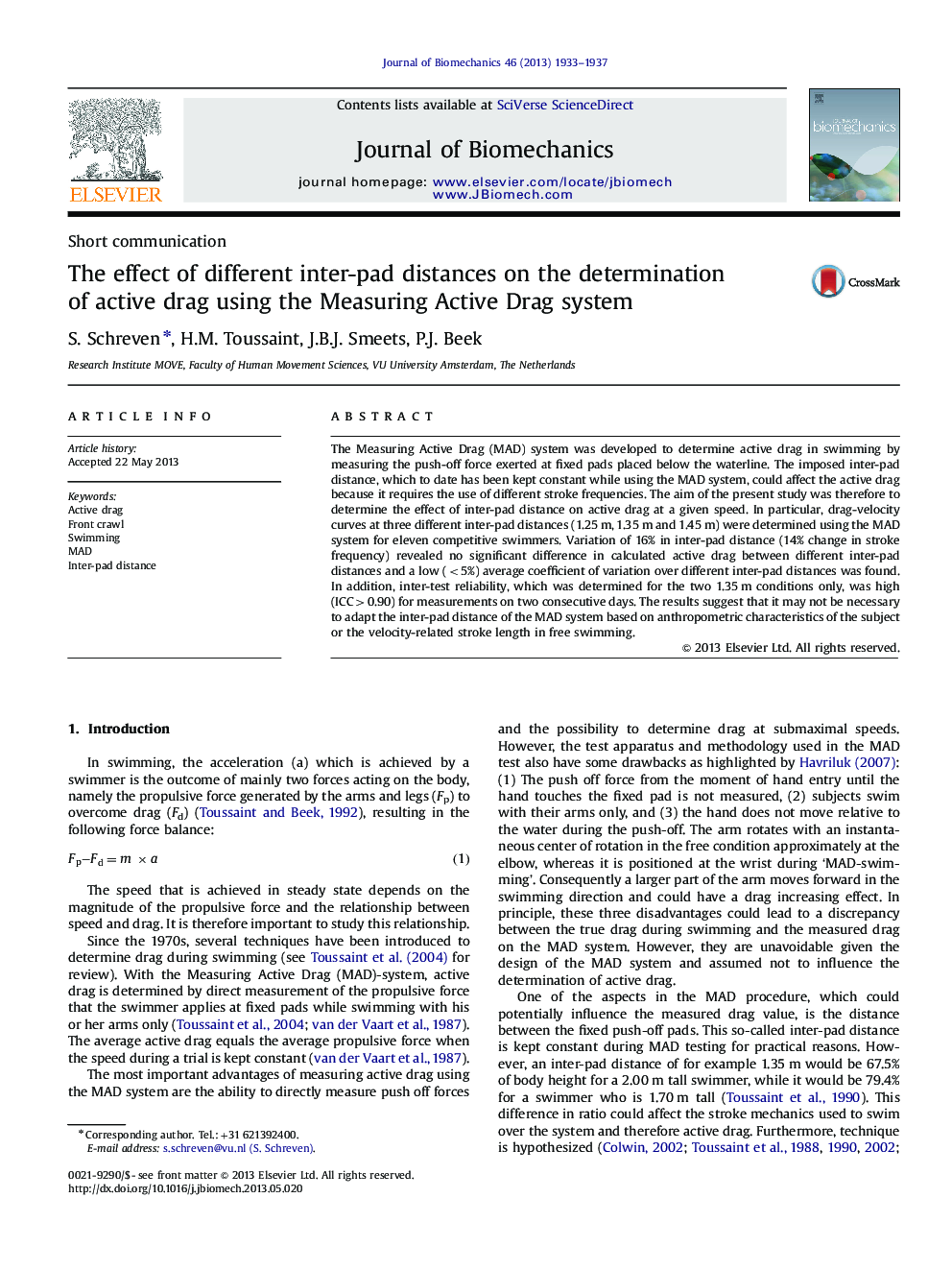| Article ID | Journal | Published Year | Pages | File Type |
|---|---|---|---|---|
| 10432770 | Journal of Biomechanics | 2013 | 5 Pages |
Abstract
The Measuring Active Drag (MAD) system was developed to determine active drag in swimming by measuring the push-off force exerted at fixed pads placed below the waterline. The imposed inter-pad distance, which to date has been kept constant while using the MAD system, could affect the active drag because it requires the use of different stroke frequencies. The aim of the present study was therefore to determine the effect of inter-pad distance on active drag at a given speed. In particular, drag-velocity curves at three different inter-pad distances (1.25Â m, 1.35Â m and 1.45Â m) were determined using the MAD system for eleven competitive swimmers. Variation of 16% in inter-pad distance (14% change in stroke frequency) revealed no significant difference in calculated active drag between different inter-pad distances and a low (<5%) average coefficient of variation over different inter-pad distances was found. In addition, inter-test reliability, which was determined for the two 1.35Â m conditions only, was high (ICC>0.90) for measurements on two consecutive days. The results suggest that it may not be necessary to adapt the inter-pad distance of the MAD system based on anthropometric characteristics of the subject or the velocity-related stroke length in free swimming.
Keywords
Related Topics
Physical Sciences and Engineering
Engineering
Biomedical Engineering
Authors
S. Schreven, H.M. Toussaint, J.B.J. Smeets, P.J. Beek,
